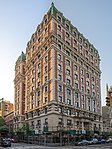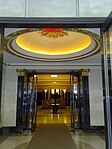Murder of Krim siblings
Lucia and Leo Krim, aged 6 and 2 respectively, were murdered in the late afternoon of October 25, 2012, at the La Rochelle apartment building on the Upper West Side of Manhattan in New York City. The children's part-time caretaker, Yoselyn Ortega, was convicted of stabbing the children to death with kitchen knives while their mother Marina Krim and three-year-old sister Nessie were a few blocks away at a swimming lesson. Upon returning home, their mother and sister found Lucia and Leo dead in a bathtub at the family apartment. Ortega then began stabbing herself repeatedly in the neck and throat. She survived the self-inflicted wounds. On February 22, 2018, twelve jurors were chosen for Ortega's trial, and opening statements began March 1 in Manhattan Supreme Court. On April 18, 2018, Ortega was found guilty of first-degree murder and second-degree murder. Ortega was sentenced on May 14, 2018, to life in prison without the possibility of parole.
Excerpt from the Wikipedia article Murder of Krim siblings (License: CC BY-SA 3.0, Authors).Murder of Krim siblings
West 75th Street, New York Manhattan
Geographical coordinates (GPS) Address Nearby Places Show on map
Geographical coordinates (GPS)
| Latitude | Longitude |
|---|---|
| N 40.7794 ° | E -73.9769 ° |
Address
La Rochelle
West 75th Street 57
10023 New York, Manhattan
New York, United States
Open on Google Maps







